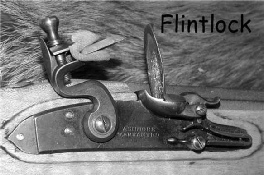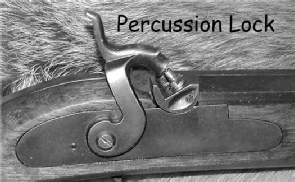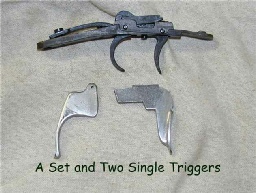Subject Guide

Mountain West
Malachite’s Big Hole
Guns:
Concerning the Mountain Man and his rifle, Washington Irving wrote "The experienced mountaineer is never without his rifle, even in camp. Ongoing from lodge to lodge to visit his comrades, he takes it with him. On seating himself in a lodge, he lays it beside him, ready to be snatched up: when he goes out he takes it up... as a citizen would his walking staff. His rifle is his constant friend and protector." In 1839 Wislizenus wrote , "On such journeys one gets habituated to his rifle as to a trusty traveling companion. During the march the gun lies across the saddle; when one rests it is always close at hand. One never leaves camp without taking it as a cane; and at night it is wrapped in the blanket with the sleeper, to be ready for use at the first alarm."



Research by Charles E Hanson, Jr. (References given below), shows that during the early Mountain Man period, the predominant rifles in use were the Lancaster and Kentucky/Pennsylvania type rifles. During the late Mountain Man period from approximately the late 1830's to early 1840's, based on inventories and fur trade records (primarily records of the American Fur Company and Pierre Chouteau & Company), the predominant rifles, in order of quantities, appear to be:
Lancaster Rifle
English Rifle
Kentucky/Pennsylvania Type Rifles
J&S Hawken Rifles
New
English Rifle (this rifle appeared to late to attain much importance)
Smooth-bore pistols and long guns were also very important weapons used by the Mountain Men and for trade with the Indians. Because the smooth-bore didn't require the difficult and time consuming process of rifling the barrel, these guns were far less expensive than even the cheapest rifles. Additionally, they could be loaded with shot and used effectively as a shotgun. Surviving trade records seem to clearly differentiate between the two types of weapons, being described as rifles, or rifle-guns, and guns (smooth-bores). These smooth-bore guns include muskets, scatterguns, and trade guns. The most prominent of the smooth bore trade guns is the North West Trade Gun pattern.
Other types of guns taken to the mountains included swivel guns and small cannons mounted on Keelboats and Steamboats. Swivel guns and small cannon might also be used at fortified trading posts. Small cannon mounted on carriages were also sometimes taken to rendezvous. These guns were used far more often for signaling and saluting then for defensive measures.
Of course the well equipped Mountain Man needed more than just a gun, he would need cleaning and maintenance tools, gunpowder and powder horn, gun flints, or percussion caps, lead, balls, and ball molds.
Topics described in more detail in the following subsections include:
For more information about the rifles and guns of the Mountain Man see the following references:
The Plains Rifle, by Charles E Hanson, Jr., published by The Stackpole Company, Harrisburg, Pennsylvania, 1960.
Hawken Rifles: The Mountain Man's Choice, by John D Baird, originally published by The Buckskin Press, 1968.
The Hawken Rifle: Its Place in History, by Charles E Hanson, Jr., published by the Fur Press, Crawford, Nebraska, 1979. Probably one of the best sources of documentation of the types of rifles carried by the mountain men, production of rifles by the Hawken brothers, and origin of the myths regarding the "Hawkens Rifles" If you read only one of these references, I would highly recommend that it be this book.
Firearms, Traps, & Tools of the Mountain Men, by Carl P Russell, published by University of New Mexico Press, 1967.
United States Firearms: The First Century 1776-1875; by David F Butler, published by Winchester Press, New York, 1971.
Russell, Carl P. Guns On the Early Frontiers: A History of Firearms from Colonial Times Through the Years of the Western Fur Trade. 1957.
The Encyclopedia of the Fur Trade :Firearms of the Fur Trade, 2011, Hanson, James, with Dick Harmon. Published by the Museum of the Fur Trade, Chadron, Nebraska. ISBN 978-0-912611-18-1.
Back to the Top
Back to Equipment
Mountain Men chose to remain with the flintlock guns for various reasons including distrust of the new system and uncertain supply for additional